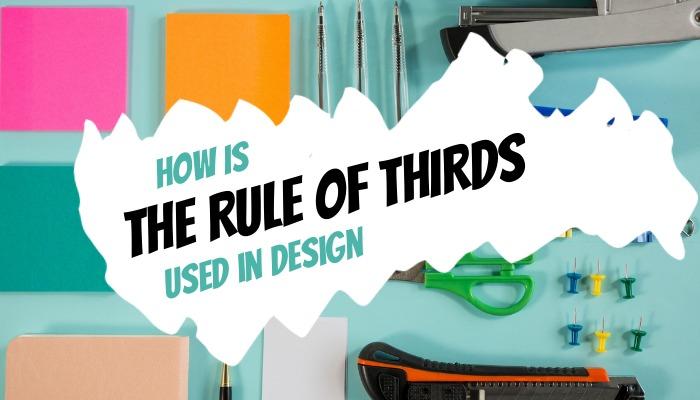“A picture is worth a thousand words”. This archaic statement may seem like hyperbole, but saying that images speak louder than words is no exaggeration. We are an inherently visual species. Vision is the sense we rely on most, a fact reflected by how complex our eyes are in relation to other creatures, including our canine best friends..
The truth is that humankind has communicated visually since the dawn of time. This stems from prehistoric cave paintings and ancient Egyptian hieroglyphs to contemporary meme culture. In essence, images and app demo videos are an essential component in exchanging information and conveying emotion.
This ability to engage an audience via images is often used in the commercial world. Throughout the evolution of humanity, visual storytelling has acted as a selling tool within structured societies. Let’s hark back to history again, shall we?
Although the term ‘visual design’ was first coined in the early 1920s, by typographer William A. Dwiggins, the concept existed way before the Industrial Revolution. Visual advertisement, posters, and images can be traced back to ancient marketplaces, from the Greek agora to Persian bazaars.
This trend has survived until our current digital era and nowadays it is more relevant than ever. In the internet-dominated commercial climate that we live in, images and visual marketing have been used as effectives tools for sales by digital marketers and eCommerce businesses alike.
New Times, New Tools

In the 21st century, the industrial climate has changed dramatically. Today, those simpler tools discussed above have taken the form of more complex digital and technology-based alternatives.
Nowadays, designers depend on a team collaboration app or software program to do share files and do a lot of their job for them. Additionally, traditional shops and marketplaces have been substituted for online stores and digital businesses. As times have changed, the way we do things has altered too.
As a result, the fundamentals that make visual communication a vital strategy for sales have been adapted to suit newer technologies. Although the digital era has altered many things, however, developing a strong visual communication strategy is as important as ever.
Nowadays, providing excellent customer service, selling high-quality products, and developing a robust sales plan is essential for companies running an online business. Having a keen eye for eCommerce website design is another priority for website builders.
Although coding and IT skills are vital for web development, there are some basic design ideas that have to be taken into account too.
Intuitive Design
It doesn’t matter how many features and tools your internet page offers or how advanced the technology behind it. eCommerce websites are designed with the customer in mind. Websites should be easy to navigate always.
Responsive Design That Adapts To All Devices

According to Statista, smartphones dominate online shopping traffic across industries. Regardless of the purchased product, over 50% of buyers use their phones as their preferred device for shopping on the internet.
When you think about it, implementing a responsive design brings many strengths but no real weaknesses. A website designed to adapt to different devices will open more doors and expand a company’s online presence.
Another way to do this is to develop an app exclusive to each business model.
Understanding Visuals
Although being familiar with these tools and trends with regard to website design is important, the basic ideas that help to create strong visuals have not changed over the years. In order to develop an improved communication strategy, one must start by understanding the fundamentals.
Regardless of what tools you work with or what medium you use to sell your products, the same visualization engagement rules apply. For example, say a designer is trying to visualize a piece of data. Infographics are more than mere pie charts, histograms, or bar graphs. How we choose to represent data can affect the viewer’s ability to understand what those numbers mean.
Here are some basic theories that help designers and visual communicators organize information and create eye-catching logos, brand images, and overall great designs.
Color Theory

There are some rules that can be applied to any type of visual design, and infographics are no exception. Nowadays, popular design theories like color theory are believed to only describe how a chromatic choice makes viewers feel (everybody knows the classic ‘red means passion, romance, or anger’, for example).
However, the truth is that color theory is a legitimate mix of science and creativity that explores color harmony, complementary colors, and much more. If you’re going to design an infographic, having in mind what colors fit with one another or what tones should represent each value or piece of data is a priority.
This theory also applies to branding. Many companies base the color of their logo on the meaning or value each color has. Companies like Whole Foods or Tropicana use green due to its association with nature. Other brands try to use eye-catching or unique colors to differentiate themselves from their competitors.
When it was first launched, Twitch used a rather boring logo that wasn’t very eye-catching, making the live streaming company indistinguishable from its competitors. In 2012, however, it rebranded and transitioned to a new logo. The now-iconic purple color scheme was also introduced, along with a new font and style. This is an example of color theory at work.
With regard to color combinations, bicolor logos and branding strategies tend to be the most popular. Multi-million dollar companies like MasterCard, McDonald’s, Lego, Lays, Ferrari, Shell, and DHL have all trusted this strategy, combining vibrant red and yellow tones to form eye-catching logos.
These examples demonstrate how complementary colors work. Due to their complementary nature, colors like red and green do not go as well together, since they don’t contrast with each other in the way that red and yellow do.
Visual Hierarchy
In order to develop clear infographics, it’s also important to understand data relevance. When dealing with complex data, know what your focal point is. Designers shouldn’t try to encapsulate every piece of information in one image. This results in confusing and unclear designs that fail to convey an idea.
It’s important to carefully choose what it is that you want to say or explain with an image and then to discard everything else. However, if a designer decides to opt for a busier image, it’s important to establish a strong visual hierarchy, where each bit of data or piece of info is organized according to its importance.
Visual hierarchy can be used to arrange elements within a website too. Western-based companies tend to order elements starting from the upper left corner since most Western languages read from there.
Webpages like YouTube, Facebook, LinkedIn, and Instagram are examples of this visual hierarchy strategy being applied to web design.
The Golden Ratio

The golden ratio is a timeless and infallible tool used by designers to create satisfying, beautiful, and engaging visuals. The golden ratio is the result of complex mathematical formulas. The actual number is 1.61803398875, and it’s represented by the Greek letter “phi” (Φ). Its history traces back to Ancient Greece, where the first reported study of its geometrical application was developed by Euclid.
Even though this all sounds very complex, designers are in constant contact with the golden ratio, since it can be found all around us. It’s present in natural elements like shells, storms, and even leaves and is widely used by brands and companies looking to design products and logos that are visually satisfying.
Much like the rule of thirds, the golden ratio is used to select proportions and make images with a stronger sense of composition. It can be applied during website development to determine the ideal page layout, for example.
As a result, all elements of the page appear proportional, and the white space between conveys a sense of pattern and composition.
Being A Designer In The Digital Era

As we explained earlier, the digital era has shaped how designers develop visual communication strategies. The rapid development of communication technologies and image editing software have completely transformed the visual design industry.
However, one core aspect of marketing and advertisements has not changed: graphic design is, by its nature, a collaborative discipline. It incorporates skills from various fields. Writers come up with slogans and typographies, illustrators design images, icons, and logos, and designers put those elements together.
Every creative/visual communicator is a collaborative team member who adds value to the marketing department in a unique way. But the digital era has modernized the tools designers have at their disposal. The days of various creatives locked in an office and brainstorming ideas are long gone.
Thanks to the implementation of telecommuting and remote working, designers can now create unique and engaging visuals from any part of the globe. As a result, international teams are the new norm.
The rapid development of videoconferencing technologies and team collaboration software has made this possible. These apps offer essential and useful features like free video chat, which allows project supervisors to give daily updates to designers.
It should go without saying but design is an inherently visual art due to its image-based nature. Screen sharing is an essential feature for collaborative designers and marketing teams since it offers many advantages for those looking to collaborate and come up with eye-catching and engaging designs. Implementing a screen-sharing app should therefore be a priority for forward-thinking .
All of these services and features (video chats, screen sharing, and so on) are provided by cloud computing companies. These come with a series of unique advantages. They do not only offer safer file storage but are also equipped with faster processing, and their internet-based nature broadens both their scalability and availability.
What have we learned?
Anyone who has read this far is now equipped to face the unique challenges that come with design and visual communication strategies. Throughout this article, we have learned about the importance of images and visual storytelling, as well as their history and various applications in the modern world we live in.
Additionally, we’ve touched on how the passage of time and implementation of new technologies have shaped visual communication, while reminding designers how important the basic tenets of visual communication are.
These basic design theories – color, hierarchy, and composition – are essential to developing a strong visual communication strategy. Due to their importance, their history and possible applications have been included too.
Concepts like visual storytelling, data visualization, and infographics have been examined as well, to outline how important telecommunications and teamwork culture is in the current design climate. The tools that make such feats possible – collaborative apps, video chats, and screen-sharing apps – have also been discussed.
In the end, this article should help designers to understand the history, theory, tools, and applications of a strong visual communication strategy. This knowledge is vital for marketing and advertising experts, but it can be used in many other fields too.
Remember, since we are inherently visual beings, visual storytelling and visual communication really are everywhere.

Richard Conn
Richard Conn is passionate about connecting businesses and customers and has experience working with Fortune 500 companies such as Google, Experian, Target, Nordstrom, Kayak, Hilton, and Kia. Sometimes uses Online Storyboard Creator from Design Wizard.


